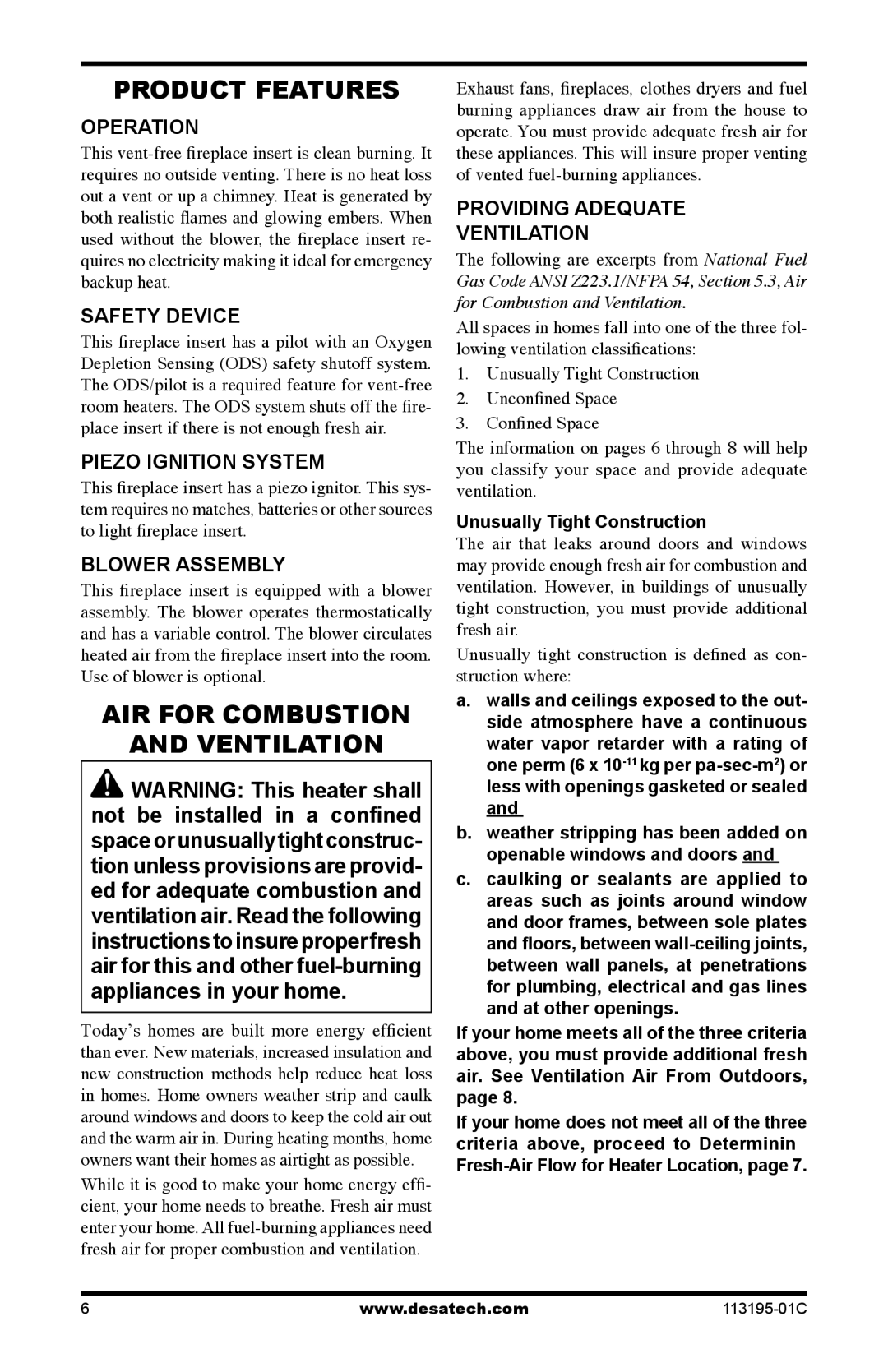GS38 specifications
Desa GS38 is an innovative product that stands at the intersection of cutting-edge technology and eco-friendly design, making it a standout choice in its category. This model is an embodiment of modern engineering and functionality, catering to the needs of both residential and commercial applications.One of the defining features of the Desa GS38 is its energy-efficient performance. Designed to minimize energy consumption while maximizing output, the GS38 utilizes advanced technologies that optimize fuel efficiency. This not only helps in reducing utility bills but also aligns with global efforts toward sustainability, making it an environmentally responsible choice. The efficient combustion system integrated into the device ensures that emissions are kept to a minimum, further contributing to a cleaner atmosphere.
Technologically, the Desa GS38 is equipped with a state-of-the-art digital control system. This allows users to monitor and adjust settings with precision, leading to greater comfort and convenience. The intuitive interface makes it easy to program heating schedules, ensuring that spaces are warmed up before they are used, eliminating energy wastage. The device also features smart connectivity, allowing it to be integrated with home automation systems for remote control and operation.
Another significant characteristic of the Desa GS38 is its robust build quality. Made from high-grade materials, the unit is designed to withstand harsh conditions while maintaining operational excellence. The heat-resistant components extend the lifespan of the product, ensuring reliability even during peak usage times.
Safety is also a priority in the design of the Desa GS38. Equipped with multiple safety features such as overheat protection and automated shut-off mechanisms, users can have peace of mind knowing that the device operates safely. This makes it an ideal solution for families and businesses alike.
In summary, the Desa GS38 is a remarkable heating solution that combines energy efficiency, advanced technology, and outstanding durability. Its user-friendly interface, smart connectivity, and safety features make it a versatile choice for various applications. As we move toward a more sustainable future, the Desa GS38 marks a significant step in the direction of eco-conscious innovation in heating solutions.

